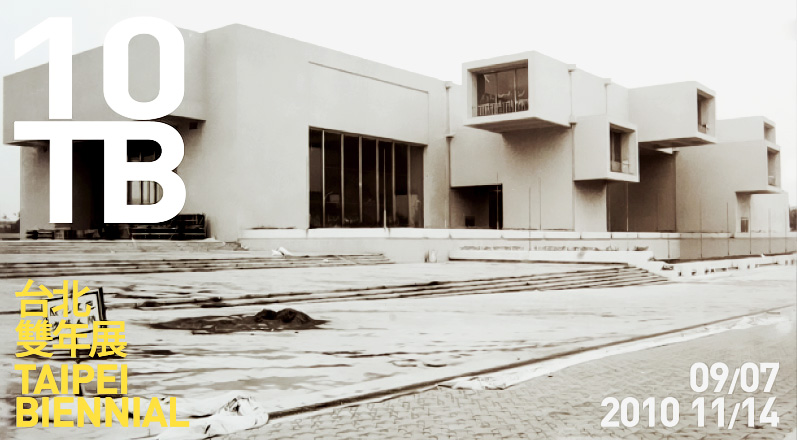

2008
The Taipei Biennial is organised by the Taipei Museum of Fine Arts. The 6th edition, curated by Manray Hsu [Germany/Taiwan] and Vasif Kortun [Turkey], takes place between September 13, 2008 and January 4, 2009.
In addition to the Taipei Museum of Fine Arts, which is the main venue established for the Taipei Biennials, the 6th edition also includes projects in the Beer Brewery, on the mega-digital screen at the Taipei Arena, in Taipei Art Park, at the Zhongxiao Xinsheng MRT Station, and an intervention at No.13, Qidong Street. The Biennial will also employ a number of advertising boards in the city, spreading the exhibition throughout different neighbourhoods and bringing the project into view when least expected.
In addition, upon the invitation of the curators, the artist/activist Oliver Ressler presents an exhibition within the context of the Biennial titled A World Where Many Worlds Fit that is dedicated to resistance movements.![]() <link>
<link>
2006
The fifth Taipei Biennial, held in 2006, was titled Dirty Yoga and was curated by internationally acclaimed American curator Dan Cameron and the Taiwan curator Jun-jieh Wang. The exhibition took the popular activity of yoga as its starting point, looking at how yoga has lost its original spirit as it has become more popular, and how it projects extreme value systems regarding desire and fear, sickness and health, beauty and ugliness, both in Taiwan and globally.
The exhibition considered the ideology of binary opposition popular around the world, and attempted to open up the possibility of a middle ground, by deeply exploring the dual nature, ambiguity and neutrality between the two end points of people's living surroundings, movements, and work.![]() <link>
<link>
2004
The 2004 Taipei Biennial, Do You Believe in Reality? was curated by Belgium curator Barbara Vanderlinden and Taiwan curator Amy Huei-hua Cheng. The exhibition hoped to use the notion of 'reality' to better grasp the here and now and to present the back and forth that is constantly taking place between the world's cultured citizens. The exhibition also responded to a recent wave of globalisation and the resulting problems unleashed by countries around the world: the conflict between traditional and modern values, the labour problems created by the transformation of the world's economic and industrial models, immigration problems, the disparity in wealth between the city and rural areas created by urbanisation, cultural status identification, diversity and homogenisation. ![]() <link>
<link>
2002
In 2002, the Taipei Biennial continued with a collaborative curatorial approach and invited the Spanish international curator Bartomeu Mari and Taiwan curator Chia Chi Jason Wang to work together on the exhibition. Via the theme Great Theatre of the World, the curators attempted to inspect and examine the illusory effects brought on by today's 'media society', and how it can cause human nature to sink and become lost in a 'visual spectacle'. The exhibition provided an introspective viewing model, as it was hoped that viewers would actively enter the space and inner world of the artists' works. ![]() <link>
<link>
2000
In 2000, the Taipei Biennial took a more vital, open, and forward-looking step by inviting the French international curator Jerome Sans to plan the exhibition in cooperation with Taiwan curator Manray Hsu. Through mutual dialogue, the biennial was approached in a more diverse, multi-disciplinary and experimental direction, with emphasis placed on interaction and experience. The biennial was named The Sky is the Limit. Artists from 19 countries were invited to participate, and the works emphasised the dialogue taking place between Asia and the rest of the world, in particular noting Asia's special characteristics, and future possibilities. Contemporary art was used to reflect many aspects of life in the world. ![]() <link>
<link>
1998
Taipei Biennials held since 1998: the theme of the 1998 exhibition was Site of Desire, curated by the Japanese international curator Fumio Najio who invited 36 artists of varying backgrounds, experience and age from Japan, China, Taiwan and Korea to participate. Exhibited works included paintings, sculpture, video installations and site-specific works.![]() <link>
<link>
